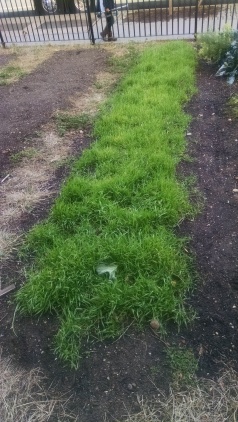I don’t remember when I first heard the term “cover cropping,” but I know it was a while after I developed a serious interest in gardening and farming. An ongoing curiosity concerning the growth and care of plants has resulted in my working in the horticulture department of a zoo, as an employee of a commercial landscaping company, and as an educator and gardener in school and community garden settings. As my experience has progressed, my understanding of and appreciation for the more subtle aspects of plant and land care has increasingly developed.
Initially, I was attracted to the “flashy” aspects of farming: beautiful, sun-ripened tomatoes; rows of bright sunflowers; the species that look, smell, and taste good. I cared about growing these plants because I immediately understood the benefit of doing so. Over time, I’ve realized (through both personal experience and study) that farming is a complex art requiring a lot of thought and planning if one wishes to grow crops in a way that is healthy for people and the land, long-term.

Cover cropping is a principle utilized by many farmers that is beneficial in so many ways. The idea is simple: crop rotation is key in farming, as certain species only grow in certain seasons, and pest and fertility problems can result from growing the same thing in the same place year after year. Using a “cover crop” as part of the rotation involves the planting of a species that is not necessarily grown to be harvested (although sometimes it can be), but as a place-holder in between the “cash crops,” or produce grown for market value. Commonexamples of cover crops are grains like rye and buckwheat and legumes like alfalfa and hairy vetch. Planting a cover crop ideally protects the soil, restores the nutrients leached by the cash crops, and crowds out potential weeds.
With these ideas in mind, planting a cover crop in between seasons seems like a no-brainer to me. Cover crops are often easy to establish and can be left to do their thing when the land might otherwise be empty or less productive. Allowing the land to rest and be restored in this way makes for a more productive plot in the long-term, and it limits the need for reintroducing nutrients through chemical or alternative means. It also saves the farmer from having to eradicate the abundant weeds that will grow in a vacant bed.
We started several rows of cover crops at the NYU Urban Farm this fall, and it has been exciting to watch them grow! The buckwheat germinated quickly, and now a nice blanket of green covers several of the rows that don’t have vegetables. In the spring, the cover crop will be easy to pull up or till into the soil, and the bed will be fresh and ready to grow something else. It’s nice when the plants do some of the work!
-Margaret McQuiston